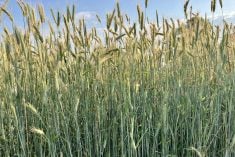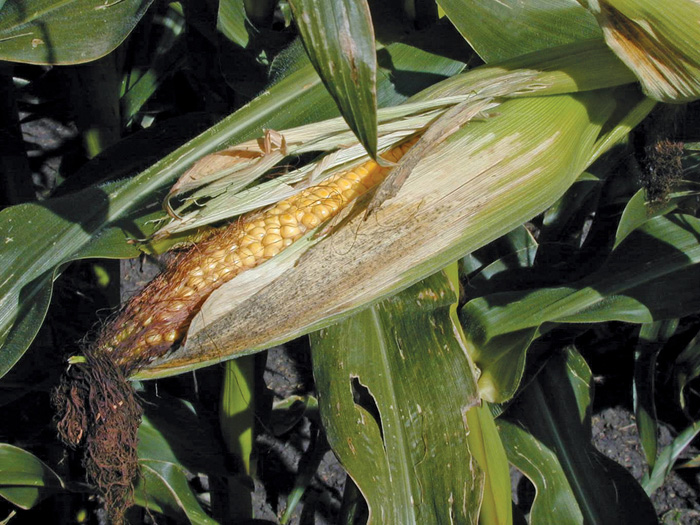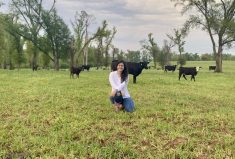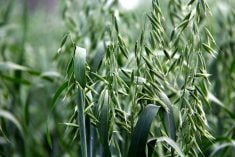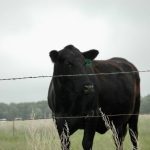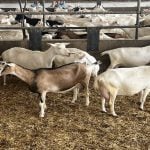If you want to know the nutrient quality of forage, you must have it analyzed.
It always pays to test dry forages, but it’s also worth testing silages, grains and water. When comparing different feeds, always compare the values on a “dry basis” to remove the moisture effect of results.
Barry Yaremcio of Yaremcio Ag Consulting Ltd. says many cow-calf producers in Canada put up silage for winter feed. Samples can be taken as the fresh material is being put into storage, or core-sampled after it has fully ensiled but before feeding.
Read Also
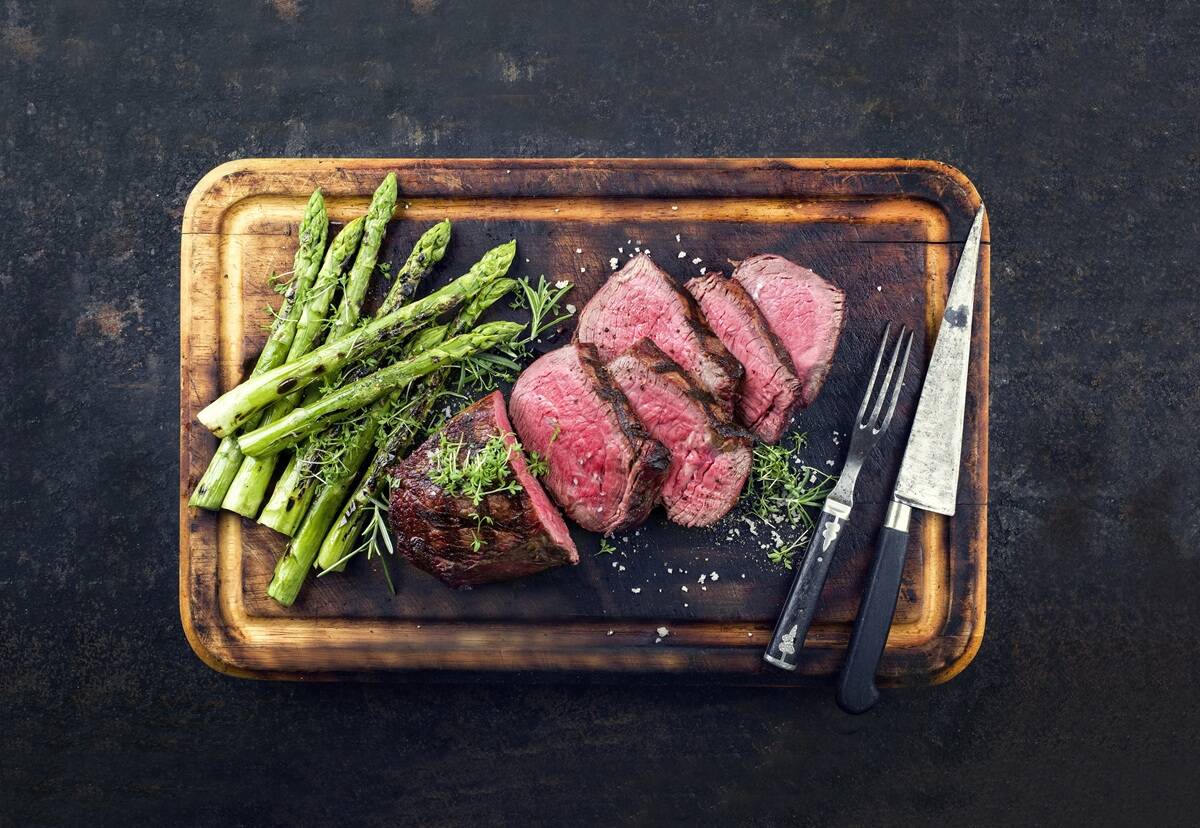
Building demand together: The impact of Canada’s beef import levy
The beef import levy has become a central tool for ensuring balance in Canada’s beef industry
To illustrate how to interpret numbers on a feed test, Yaremcio picked a test from his files, in this instance for barley silage. Categories on the results include moisture or dry matter, protein, fibre, energy, minerals, trace minerals and starch.
Moisture content for good silage should be between 60 and 65 per cent, says Yaremcio. In this particular test, it was 65.53.
“You don’t want moisture to be above 70 per cent. Higher moisture content dilutes the acids formed during fermentation and prevents rapid reduction in pH, which increases the time required to create a stable product and can reduce quality. At higher moisture, if the silage is not properly packed and sealed, there is risk for spoilage to occur and listeriosis may develop,” he says.
[RELATED] A closer look at your feed test
Moisture content as low as 55 per cent can still make good silage, Yaremcio adds, but as moisture declines, it becomes harder to pack the fresh material. Chop length should be reduced to exclude more oxygen from the pile, pit or storage structure and get a better pack, he says. He also recommends increasing packing.
This sample was two-year-old silage, and the moisture rose nine per cent from the first year.
“The increase was caused by deer walking on and puncturing the plastic, allowing rain and melted snow to enter the silage.” If there is a large amount of silage in a pile, bunk or silo or if storage conditions change, resample at least two to four times a year.
Acid detergent fibre (ADF) contains lignin, cellulose and ash. It is an estimate of plant maturity. “As the plant matures, ADF values increase. Grasses and annual cereals have higher ADF values than legumes. As ADF levels increase, crude protein decreases.”
Neutral detergent fibre (NDF) contains lignin, cellulose, ash and hemicellulose.
“Hemicellulose is difficult for rumen microbes to digest and can reduce feed passage rates,” says Yaremcio. If NDF content exceeds 1.2 per cent of animal body weight or about 60 per cent in the final ration, it will limit feed intake, he adds.
[RELATED] Optimizing wheat grain use in feedlot diets
Mineral and trace mineral forage content depends on weather (dry, or good growing conditions), soil fertility, soil, crop type and rotation. “When grasses mature, calcium levels decline after the seed head is formed and phosphorus levels increase. Mineralization or nutrients from the soil is variable. In dry conditions, especially with shallow-rooted annual crops, nutrient availability is reduced.”
Starch is important when formulating feedlot or dairy rations which contain significant amounts of grain. “High starch levels increase incidence of digestive upsets, acidosis and bloat. In a beef cow ration where the ration is mainly silage or silage plus some other forage such as straw or lower-quality hay, starch is not a big concern.”
Crude protein depends on the material being ensiled, weather, soil fertility and crop maturity. This barley silage sample contained 10.6 per cent protein, which is about average, says Yaremcio. Corn silage typically contains about nine per cent protein. Legumes contain the most protein, so adding a legume to a cereal boosts protein. Oat silage typically contains 0.5 per cent less protein than barley, and wheat 0.5 per cent more protein than barley silage. Cocktail or cover crop mixes should be higher protein with inclusion of brassicas and other species, he adds.
Acid detergent fibre-crude protein (ADF-CP) measures the protein that is bound to carbohydrate and fibre components and unavailable to the animal, says Yaremcio. This happens when temperatures exceed 40 C and silage doesn’t ensile properly, he says.
ADF-CP is considered digestible when the ADF-CP/protein ratio is less than 14:1. When the ratio exceeds 14:1 but less than 20:1, the available protein requires adjustment. If the ratio exceeds 20:1, then all the ADF-CP is considered bound and unavailable to the animals and should be subtracted from the reported crude protein value before the ration is balanced.
To calculate heat damage’s effect on available protein, divide the ADF-CP (1.77 per cent) by the crude protein (10.6 per cent). The resulting ratio is 16.7:1. Since an adjustment is required, you then subtract seven from the resulting ratio (16.7 – 7) = 9.7. Divide 9.7 by 100 and then multiply by the crude protein test result to calculate the unavailable crude protein. (9.7/100) x 10.6 = 1.02. Subtract 1.02 per cent from the crude protein content of 10.6 per cent to get the available crude protein of 9.58 per cent. This is the value used when balancing the ration.
Neutral detergent fibre-crude protein (NDF-CP) is available to the animal but is digested more slowly. But there’s no need to adjust available protein from this fraction, Yaremcio says.
Undegradable intake protein (UIP) is one of three protein fractions considered when developing a ration. UIP is also referred to as bypass protein.
Bypass protein helps increase milk production and muscle development in young animals. The content in forages depends on crop type (grass versus alfalfa), species (bromegrass versus perennial ryegrass), maturity, crop fertility and fermentation process, he adds.
Balancing a ration is partly science — to provide the nutrient requirements — and experience regarding how different feeds can fit together.
It is difficult to provide specific values for the nutrients an animal requires. Age, body condition score, stage of pregnancy or lactation, growth rate (calves), temperatures and overall health all affect requirements.
The Beef Cattle Research Council has a tool that compares the individual feed quality to an animal’s nutrient requirements, and also links producers to other useful resources (find it here on the BCRC website). “It provides a snapshot of how individual feeds fit into a feeding program,” says Yaremcio.
“There are resources available to build rations on your own, or you can use provincial extension specialists, or have a feed company or independent nutritionist balance the ration for you.”



